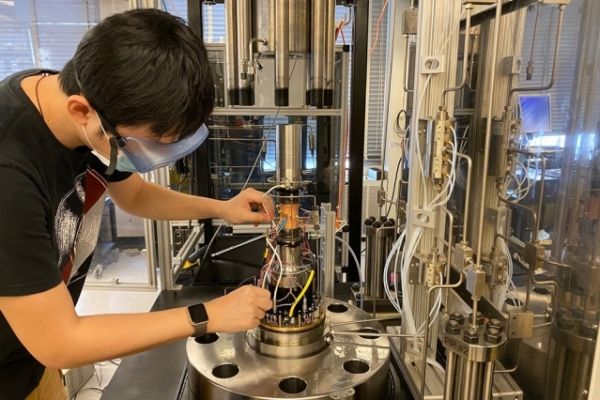The Carbon Capture, Utilization, and Storage Center, one of the MIT Energy Initiative (MITEI)’s Low-Carbon Energy Centers, has awarded $900,000 in funding to two new research projects to advance technologies that avoid carbon dioxide (CO2) emissions into the atmosphere and help address climate change. The winning project is receiving $750,000, and an additional project receives $150,000.
The winning project, led by principal investigator Asegun Henry, the Robert N. Noyce Career Development Professor in the Department of Mechanical Engineering, and co-principal investigator Paul Barton, the Lammot du Pont Professor of Chemical Engineering, aims to produce hydrogen without CO2 emissions while creating a second revenue stream of solid carbon. The additional project, led by principal investigator Matěj Peč, the Victor P. Starr Career Development Chair in the Department of Earth, Atmospheric and Planetary Sciences, seeks to expand understanding of new processes for storing CO2 in basaltic rocks by converting it from an aqueous solution into carbonate minerals.
Carbon capture, utilization, and storage (CCUS) technologies have the potential to play an important role in limiting or reducing the amount of CO2 in the atmosphere, as part of a suite of approaches to mitigating to climate change that includes renewable energy and energy efficiency technologies, as well as policy measures. While some CCUS technologies are being deployed at the million-ton-of-CO2 per year scale, there are substantial needs to improve costs and performance of those technologies and to advance more nascent technologies. MITEI’s CCUS center is working to meet these challenges with a cohort of industry members that are supporting promising MIT research, such as these newly funded projects.
Read more at Massachusetts Institute of Technology
Photo: Postdoc Tiange Xing conducts an experiment in the Peč Lab related to the group’s newly funded project to expand understanding of new processes for storing carbon dioxide in basaltic rocks by converting it from an aqueous solution into carbonate minerals.
Photo courtesy of the Peč Lab.


